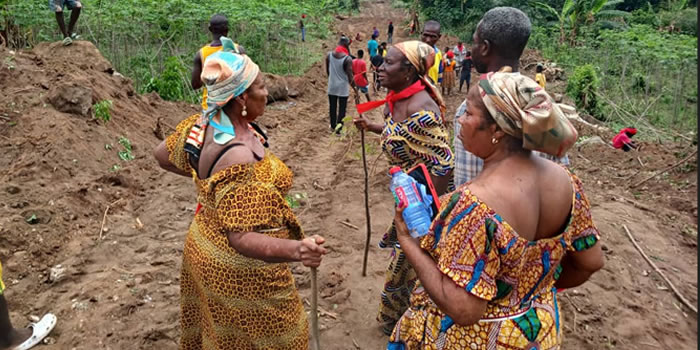

Introduction
The chapter presents the results of the analysis of data on the economic activity status of the population by age, sex and employment status. The economic and social development of the district is dependent upon the quality and quantity of its productive resources, of which labour is important. The other productive resources, namely physical capital and land, are dependent upon labour. The potential workforce of the district is derived from its adult population that is available to work (aged 15 years and older). Of the potential workforce, it is known that some may be pursuing legitimate concerns such as schooling which is not an economic activity at the material time and therefore is excluded from those the district can count on for the production of goods and services. Others are retired or disabled. These categories are therefore referred to as economically not active.
Economic Activity Status
Table 4.1 shows the population aged 15 years and above by activity status and sex in Nsawam Adoagyiri Municipality. The table reveals that, among the population aged 15 years and older, 66.5 percent are economically active, (i.e. the summation of employed and unemployed population) with 92.7 percent being employed and 7.3 percent being unemployed. However, approximately 34 percent of the population aged 15 years and older is economically not active.
Economically active by sex
Table 4.1 also shows activity status of population 15 years and older by sex. It can be noted that, out of the total 56,493 people in this category, 66.5 percent are economically active while 33.5percent are economically not active. Among the males, 63.7 percent are economically active while 36.3percent are economically not active and among the females, 69.3 percent are economically active and 30.7 percent economically not active.
Again within the economical active population, 92.7 percent are employed while 7.3 percent are unemployed. Among the employed population, 95.6 percent responded that they worked seven days preceding the census night and 3.9 percent answered that they did not work but had job to go back to, whiles 0.5 percent did voluntary work without pay (Table 4.1). Within the economic active population 7.3 percent are unemployed of which 62.9 percent are seeking work for the first time and available while 37.1 percent worked before, seeking work and available.
Economic active status by age
It can be observed from Table 4.2 that out of the population aged 15 years and older, 61.7 percent are employed, 4.9 percent are unemployed and 33.5 percent are economically not active. For both sexes, age group 15-19 years recorded the least (15.8%) in the employed category and a high proportion of 80.1 percent are economically not active. However, approximately 5 percent of the population aged 15 years and older is unemployed in the municipality. Majority of persons aged 15-19 years are economically not active and this could be attributed to the fact that most of them may still be in school. While for both sexes, the age group 45-49 years has majority of its members (84.9%) employed, 2 percent are unemployed and 13 percent are economically not active. For males, the age group50-54 years exhibits the highest proportion employed (82.1%) followed by the age group 55-59 years (80.9%) with 40-44 and 45-49years age groups recording 80.8 percent each. The age group 65years and older has the least employed (0.7%) and majority of the 15-19year-olds years (81.1%) are economically not active.
Among the females, the age group 45-49 years recorded the highest proportion (88.8%) of persons employed closely followed by age groups 40-44 and 35-39 recording 87.9 percent and 85.5 percent respectively. Majority (79.1%) of the females aged 15-19 years is economically not active and the least unemployed are the females aged 50-54 years (1.8%).
Occupation
Table 4.3 shows employed population aged 15 years and older by occupation and sex. Nearly 29 percent of the employed population for both sexes is service and sales workers, 12.6 percent males and 43 percent females are involved in service and sale occupation. This confirms the conventional dominance of females in the bakery and petty trading sectors in the municipality as compared with males who always engaged in herculean tasks. Skilled agricultural, forestry and fishery workers recorded the next high proportion of 22.4 percent for both sexes, and 27.9 and 17.5 percent for males and females t respectively.
Date Created : 11/27/2017 2:50:35 AM












 facebook
facebook
 twitter
twitter
 Youtube
Youtube
 +233 593 831 280
+233 593 831 280 0800 430 430
0800 430 430 GPS: GE-231-4383
GPS: GE-231-4383 info@ghanadistricts.com
info@ghanadistricts.com Box GP1044, Accra, Ghana
Box GP1044, Accra, Ghana